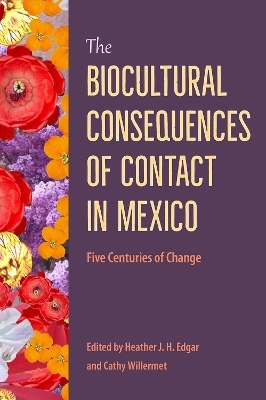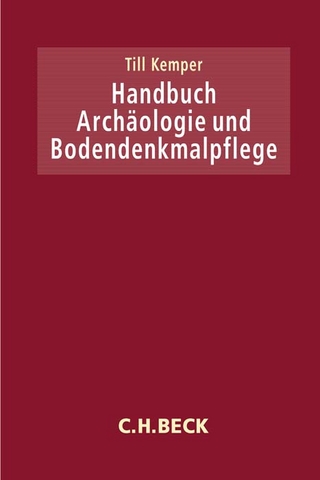
The Biocultural Consequences of Contact in Mexico
Five Centuries of Change
Seiten
2023
University Press of Florida (Verlag)
978-1-68340-350-0 (ISBN)
University Press of Florida (Verlag)
978-1-68340-350-0 (ISBN)
Explores how Mexican populations have been shaped both culturally and biologically by the arrival of Spanish conquistadors and the years following the defeat of the Aztec empire in 1521. Contributors draw on a diverse set of methods from archaeology, bioarchaeology, genetics, and history to examine the response to European colonization.
Examining the long-lasting effects of European colonization on Mexican populations
The Biocultural Consequences of Contact in Mexico explores how Mexican populations have been shaped both culturally and biologically by the arrival of Spanish conquistadors and the years following the defeat of the Aztec empire in 1521. Contributors to this volume draw on a diverse set of methods from archaeology, bioarchaeology, genetics, and history to examine the response to European colonization, providing evidence for the resilience of the Mexican people in the face of tumultuous change.
Essays focus on Central Mexico, Yucatan, and Oaxaca, providing a cross-regional perspective, and they highlight Mexican scholars’ work and viewpoints. They examine the effects of the castas system—which the colonizers used to organize society according to parentage and the social construction of race—on individuals’ and groups’ access to power, social mobility, health, and mate choice. Contributors illuminate the poorly understood extent that this system—and the national identity of mestizaje that replaced it—caused structural inequality and the structural violence of stress and health disparities, as well as genetic admixture.
Five hundred years after the Spanish first clashed with Aztec forces and began to influence modern Mexico, this volume adds to discussions of colonialism, the reconstruction of biosocial relationships, and the work of decolonization. Students and scholars in anthropology and history will gain insights into how human populations transform and adapt in the wake of major historical events that result in migration, demographic change, and social upheaval.
Examining the long-lasting effects of European colonization on Mexican populations
The Biocultural Consequences of Contact in Mexico explores how Mexican populations have been shaped both culturally and biologically by the arrival of Spanish conquistadors and the years following the defeat of the Aztec empire in 1521. Contributors to this volume draw on a diverse set of methods from archaeology, bioarchaeology, genetics, and history to examine the response to European colonization, providing evidence for the resilience of the Mexican people in the face of tumultuous change.
Essays focus on Central Mexico, Yucatan, and Oaxaca, providing a cross-regional perspective, and they highlight Mexican scholars’ work and viewpoints. They examine the effects of the castas system—which the colonizers used to organize society according to parentage and the social construction of race—on individuals’ and groups’ access to power, social mobility, health, and mate choice. Contributors illuminate the poorly understood extent that this system—and the national identity of mestizaje that replaced it—caused structural inequality and the structural violence of stress and health disparities, as well as genetic admixture.
Five hundred years after the Spanish first clashed with Aztec forces and began to influence modern Mexico, this volume adds to discussions of colonialism, the reconstruction of biosocial relationships, and the work of decolonization. Students and scholars in anthropology and history will gain insights into how human populations transform and adapt in the wake of major historical events that result in migration, demographic change, and social upheaval.
Heather J. H. Edgar is professor of anthropology at the University of New Mexico and forensic anthropologist for the State of New Mexico. She is the author of DentalMorphology for Anthropology: An Illustrated Manual. Cathy Willermet is professor of anthropology at Central Michigan University. She is coeditor of Evaluating Evidence in Biological Anthropology: The Strange and the Familiar and Bioarchaeology of Pre-Columbian Mesoamerica: An Interdisciplinary Approach.
| Erscheinungsdatum | 08.02.2023 |
|---|---|
| Reihe/Serie | Bioarchaeological Interpretations of the Human Past: Local, Regional, and Global Perspectives |
| Zusatzinfo | 30 b&w illustrations, 49 tables |
| Verlagsort | Florida |
| Sprache | englisch |
| Maße | 152 x 229 mm |
| Gewicht | 363 g |
| Themenwelt | Geisteswissenschaften ► Archäologie |
| Sozialwissenschaften ► Ethnologie | |
| Sozialwissenschaften ► Soziologie | |
| ISBN-10 | 1-68340-350-9 / 1683403509 |
| ISBN-13 | 978-1-68340-350-0 / 9781683403500 |
| Zustand | Neuware |
| Informationen gemäß Produktsicherheitsverordnung (GPSR) | |
| Haben Sie eine Frage zum Produkt? |
Mehr entdecken
aus dem Bereich
aus dem Bereich
maternal health science and the reproduction of harm
Buch | Softcover (2024)
University of California Press (Verlag)
37,40 €
Holocaust heritage, noncitizen futures, and black power in Berlin
Buch | Softcover (2022)
University of California Press (Verlag)
37,40 €


